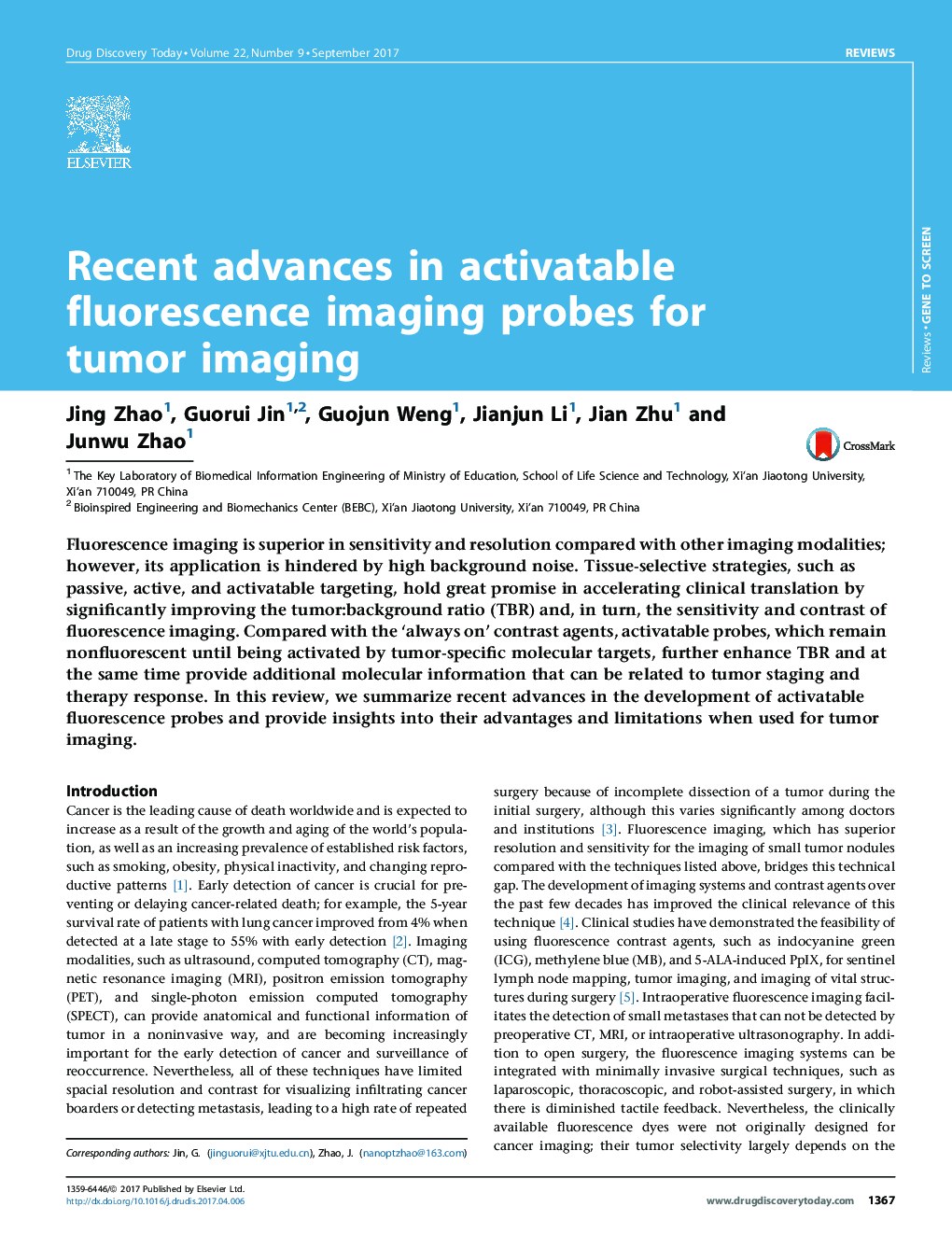| Article ID | Journal | Published Year | Pages | File Type |
|---|---|---|---|---|
| 8410299 | Drug Discovery Today | 2017 | 8 Pages |
Abstract
Fluorescence imaging is superior in sensitivity and resolution compared with other imaging modalities; however, its application is hindered by high background noise. Tissue-selective strategies, such as passive, active, and activatable targeting, hold great promise in accelerating clinical translation by significantly improving the tumor:background ratio (TBR) and, in turn, the sensitivity and contrast of fluorescence imaging. Compared with the 'always on' contrast agents, activatable probes, which remain nonfluorescent until being activated by tumor-specific molecular targets, further enhance TBR and at the same time provide additional molecular information that can be related to tumor staging and therapy response. In this review, we summarize recent advances in the development of activatable fluorescence probes and provide insights into their advantages and limitations when used for tumor imaging.
Related Topics
Life Sciences
Biochemistry, Genetics and Molecular Biology
Biotechnology
Authors
Jing Zhao, Guorui Jin, Guojun Weng, Jianjun Li, Jian Zhu, Junwu Zhao,
